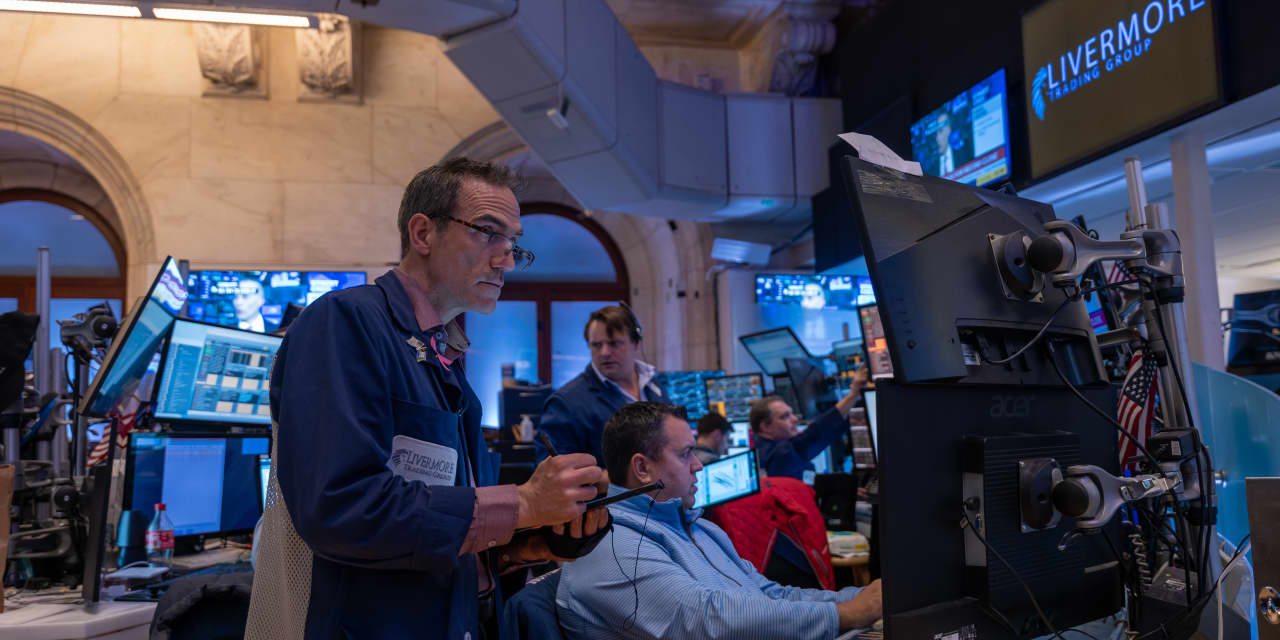Inflation has pushed up the cost of living considerably in recent years, but it isn’t just prices at the grocery store that look high. The stock market is pricey too.
While the market has continued 2023’s climb in the new year, expectations for 2024 earnings per share for the
S&P 500
have moved in the opposite direction. Since the beginning of January, they have fallen about 1% to roughly $243, but people who buy the market benchmark are still paying more than 20 times the aggregate per-share profits companies in the index are expected to produce over the next year.
The 10-year average is 17 times. And the index looks even pricier if one assumes forecasts for profits could decline further. With aggregate earnings at $230, the ratio would be pushed up to more than 21 times.
In short, as
J.P. Morgan
Chief Market Strategist Marko Kolanovic puts it, “the strong rally since the end of October has pushed both credit and equity markets into expensive valuation territory.”
That’s not necessarily a problem in itself. If the economy is expanding and companies are becoming more profitable, then it’s reasonable to think that the market’s price tag would reflect that reality. And even if 2024’s S&P 500 profitability were to come in at $235—well below current estimates—that would still be nearly 45% higher than before the pandemic. That kind of gain over five years wouldn’t be too shabby.
The problem is that conditions aren’t good enough to make people willing to pay more for a given amount of future earnings, boosting the overall market’s valuation multiple, as Gavekal Research founder Charles Gave argues.
One factor working against the case for further higher valuations is the fact that government spending remains at levels normally seen during a downturn.
“The last US recession ended a good while ago, but government spending as a share of gross domestic product is going up again, implying that the private sector’s share of the economy is shrinking. Logically, the US market’s P/E ratio should be going down and yet it has risen over the last year,” Gave said in a research note.
For his part, JPMorgan’s Kolanovic highlights that the markets’ current valuation leaves little wiggle room for error, even though risks remain.
“This week will be important in determining if current equity valuations are sustainable,” he writes. “Stocks, and particularly large cap technology, are pricing significant earnings growth, six [interest] rate cuts from the Federal Reserve over the next year, and a continuation of strong economic growth.”
That wish list isn’t impossible but it’s fairly ambitious, particularly because Kolanovic thinks that inflation will be more stubborn than bulls hope. That would make rate cuts that could boost valuations less likely.
Put another way, the market is at present pricing in nothing but a soft landing. Were investors to consider something bumpier, it’s difficult to see how its current multiple wouldn’t contract, he argues.
He’s also troubled by the lack of revenue growth projected for S&P 500 companies this year. If the current $243 earnings per share figure weren’t already a stretch, it looks even more tenuous without an expansion on the top line.
A lack of revenue increases “means that one would have to assume continuous profit margin expansion to be able to project decent positive earnings per share growth in 2024 and 2025,” Kolanovic said.
Theirs aren’t the only voices concerned about how expensive the stock market is, although that has done little to slow the rally. Part of the reason it has hung in there is the idea that the transformative power of tech can lead to a longer-term increase in profits that could power further multiple expansion.
So far investors have been rewarded for accepting the market’s elevated valuation. If profitability falls, the price is likely to do so as well.
Write to Teresa Rivas at [email protected]
Read the full article here




